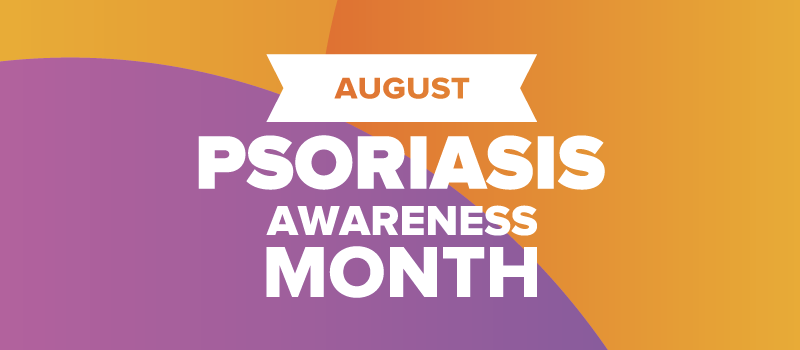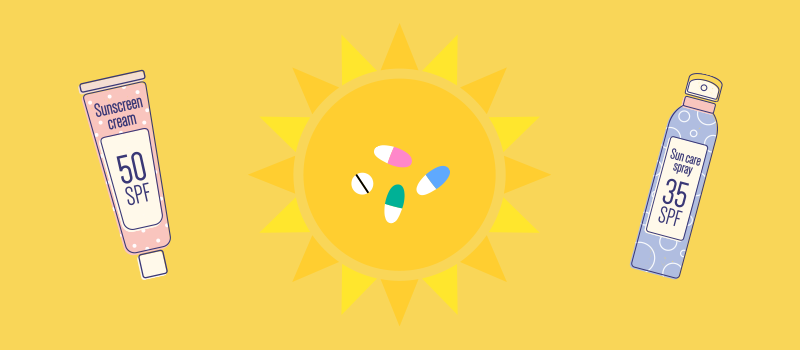What’s the Buzz
The Bee Healthy Blog
What Are The 4 Types of Athlete’s Foot?

Athlete’s foot is a common skin infection caused by a fungus. It causes a red, itchy, stinging, scaly rash on the skin of the feet. Experts estimate that 7 out of 10 people get athlete’s foot at some point in their life. There are different types of athlete’s foot based on where the infection is located and how it looks.
Please continue reading to learn more about the different types of foot fungus. We’ll also talk about preventing athlete’s foot and how to treat this fungus with over-the-counter and prescription antifungals.
What is athlete’s foot?
Athlete’s foot (tinea pedis) is a type of ringworm. It is a contagious fungal infection caused by the same fungus that causes jock itch (tinea cruris).
Athlete’s foot causes a red, itchy, burning, scaling rash on one or both feet. The rash is located most commonly between the toes but can also affect other parts of the feet.
What are athlete’s foot symptoms?
According to American Family Physician, the symptoms of athlete’s foot fungal infection include red, irritated, itchy, flaky, and scaly skin. The rash can burn, sting, and peel. The skin can develop fissures or blisters. Sometimes, feet affected by athlete’s foot smell bad. Itching and scratching foot fungus can lead to a secondary bacterial infection.
Who is at risk of getting athlete’s foot (tinea pedis)?
Athlete's foot is the most common skin infection among people who play sports, which is where it gets the name.
This contagious fungal infection spreads through skin contact with an infected person. It can also spread through contact with contaminated surfaces. The fungus needs a warm, moist environment to grow.
Athletes wear closed, tight shoes and often have sweaty feet. They use locker rooms and public pools where contact is likely with contaminated towels, shoes, and floors. These are risk factors for athlete’s foot.
As a result, athlete’s foot often spreads at swimming pools, saunas, and locker rooms where people are walking barefoot.
However, It is worth noting that athlete’s foot can affect anyone, not just people who play sports. It is more common among men, people over the age of 60, and those with medical conditions like obesity, diabetes, a weakened immune system, or skin wounds in the feet.
Is athlete’s foot fungal infection contagious?
Yes, athlete’s foot is contagious. It spreads through skin-to-skin contact (through the skin flakes of an infected person). It also spreads through contact with contaminated surfaces.
What are the different types of foot fungus?
There are four types of athlete’s foot (tinea pedis). The type of athlete’s foot depends on the location of the rash and its appearance.
Toe web infection between the fourth and fifth toes
This is the most common form of the fungal infection. It typically affects the area between the fourth and fifth toes, causing red, flaky, and cracked skin.
Moccasin-type infection
This type of athlete’s foot affects the bottoms of the feet, the edges, and the heels. It causes soreness, followed by thickening and cracking of the skin. Rarely, the infection can spread to the toenails, causing them to thicken and fall out.
Vesicular-type infection
This type of foot fungus commonly affects the bottom of the feet, but it can also appear on other parts of the feet. People with vesicular type fungal infections of the feet develop vesicles or fluid-filled blisters.
Ulcerative infection
This is a severe infection and is a rare type of athlete’s foot. Ulcers or open sores develop between the toes and on the bottoms of the feet, causing severe discomfort.
What can be mistaken for athlete's foot?
Skin conditions like psoriasis and eczema that cause a red, itchy, scaly rash may be mistaken for athlete’s foot.
How can I tell if I have athlete’s foot?
The different types of athlete’s foot vary in their location and appearance. You can have athlete’s foot diagnosed by a healthcare provider who will review your symptoms and perform a physical examination. They might take a skin or nail sample for testing in the laboratory with a potassium hydroxide solution for proper diagnosis.
Does athlete’s foot go away on its own?
Athlete’s foot is unlikely to go away on its own. Untreated athlete’s foot can spread to other parts of the body. Itching and scratching can lead to secondary bacterial infections.
Also, it’s important to get proper treatment from a family medicine or internal medicine doctor, even if you have few or no symptoms, to avoid spreading athlete’s foot to others.
What is the best treatment for athlete’s foot?
Athlete’s foot is curable. Over-the-counter (OTC) topical antifungal medications are available to treat athlete’s foot. Examples include clotrimazole (Lotrimin), terbinafine (Lamisil), miconazole (Desenex), and tolnaftate (Tinactin). These antifungal medicines come in creams, gels, ointments, powders, and sprays.
For severe cases, doctors can prescribe antifungal pills. Examples of prescription antifungals include itraconazole (Sporanox), fluconazole (Diflucan), and terbinafine (Lamisil).
It’s important to finish all the prescription antifungals your doctor gives you and use the topical medicine as directed. Stopping treatment with oral or topical medications too soon can cause the fungus to come back and become harder to treat.
How can I prevent athlete’s foot?
There are several things you can do to reduce your risk of getting athlete’s foot:
- Keep your feet dry and clean. Wear socks that absorb sweat.
- Use an antifungal foot powder or talcum powder on your feet to absorb moisture.
- Dry the skin between your toes after bathing and swimming.
- Do not walk barefoot in public swimming pools, saunas, and locker rooms. Wear shower sandals.
- Don’t wear shoes that are tight and closed. Don’t wear rubber or synthetic shoes for long periods. Instead, wear sandals that allow your feet to breathe.
- Don’t wear sports shoes two days in a row. Allow your shoes to dry completely before using them again.
- Clean your sports shoes with disinfecting wipes or antifungal spray.
- Don’t share towels and razors with others.
- Wash your socks, towels, and bedding in hot water.
If you have had athlete’s foot diagnosed:
- Complete the treatment with antifungal medicines that your doctor prescribes.
- Avoid scratching your feet as this can transfer the fungal cells to other parts of your body.
- Wear socks before underwear to prevent the foot fungus from spreading to the groin.
Reference:












SOCIAL